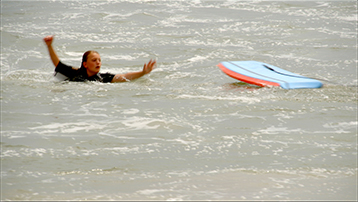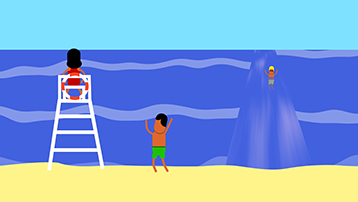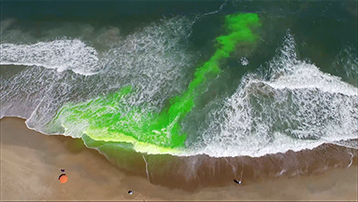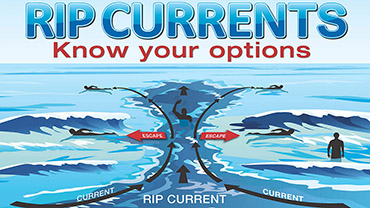Transcript
NARRATOR:
You might have heard them referred to as “undertow” or “rip tides,” but these ocean phenomena are actually rip currents.
Rip currents are narrow currents in the surf zone that move quickly away from shore.
A typical rip current ranges from 50-100 feet wide, and can extend 100 yards or more offshore. It can reach speeds of over 5 miles per hour - that’s faster than an Olympic swimmer!
That makes them dangerous and potentially deadly, and scientists want to learn more about them so we can better forecast when and where they will form - and keep beachgoers safe.
Here’s what we know:
Waves don’t have to be huge for a rip current to form - two or three feet are all it takes.
And the weather doesn’t have to be bad for a rip current to emerge. They often occur in the nice days after a storm.
They’re usually strongest near low tide, but can form at any time.
Rip currents often form where sand bars are near the shore. They occur at breaks or channels in the bar.
They’re often difficult to see, but you can spot them in areas where waves aren’t breaking, or where there’s foam, seaweed, or discolored water being pulled offshore.
It’s easier to see a rip current from higher up - such as from the beach access over dunes or a lifeguard’s tower.
Rip currents are a hazard for beachgoers, but by knowing the dangers and what to look for, you can avoid being caught in the grip of the rip.
 An official website of the United States government.
Here's how you know we're official.
An official website of the United States government.
Here's how you know we're official.





